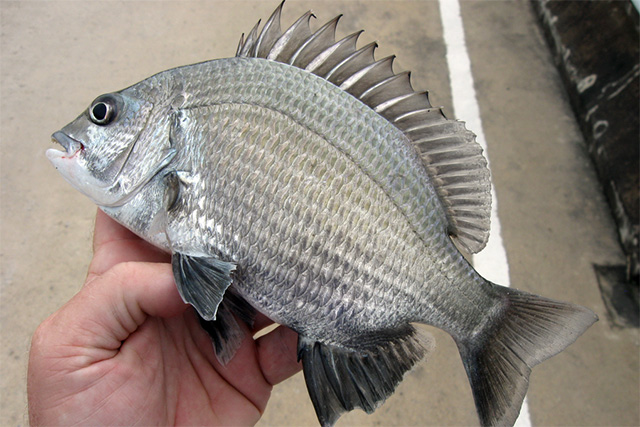| Sparidae (Porgies) |
| 50 cm SL (male/unsexed); 34.8 cm SL (female) |
|
pelagic-neritic; brackish; marine |
| Western Pacific: Japan to Australia. |
|
Dorsal spines (total): 11-11; Dorsal soft rays (total): 11-11; Anal spines: 3-3; Anal soft rays: 8-9. This species is distinguished from its congeners by the following set of characters: 3.5 scale rows between fifth dorsal-fin spine base and lateral line; ventral edge of first two infraorbitals above rear end of maxilla straight in fish less than ca 30 cm SL, but a moderate concavity of the ventral edge of the first two infraorbitals above the posterior part of upper jaw obvious in specimens about 35 cm SL; front edge of dorsal scaly area on head slightly curved (convex) without small scales; total gill rakers 15-19, modally 17; deeper body, 45-48% SL (mean 47% SL); A III, 8-9, usually III, 8; smaller orbit diameter, 2.9-4.9 (mean 3.7) in head length/orbit diameter; second anal-fin spine (2AS) clearly longer than third anal-fin spine (3AS), 2AS/3AS 1.2-1.56 (mean 1.4); scales on preopercle flange absent; pelvic and anal fins uniformly dark black (Ref. 86288). |
| Mainly in brackish waters of estuaries and inlets, coastal rivers and tidal creeks, occasionally entering lower sections of freshwater streams (Ref. 44894). Juveniles inhabit protected bays and estuaries (Ref. 47715). Usually occurs singly or small groups, but may migrate in schools (Ref. 48635). A popular angling species, often caught with hook and line (Ref. 44894). |
|
Least Concern (LC); Date assessed: 17 March 2014 Ref. (130435)
|
| harmless |
Source and more info: www.fishbase.org. For personal, classroom, and other internal use only. Not for publication.
